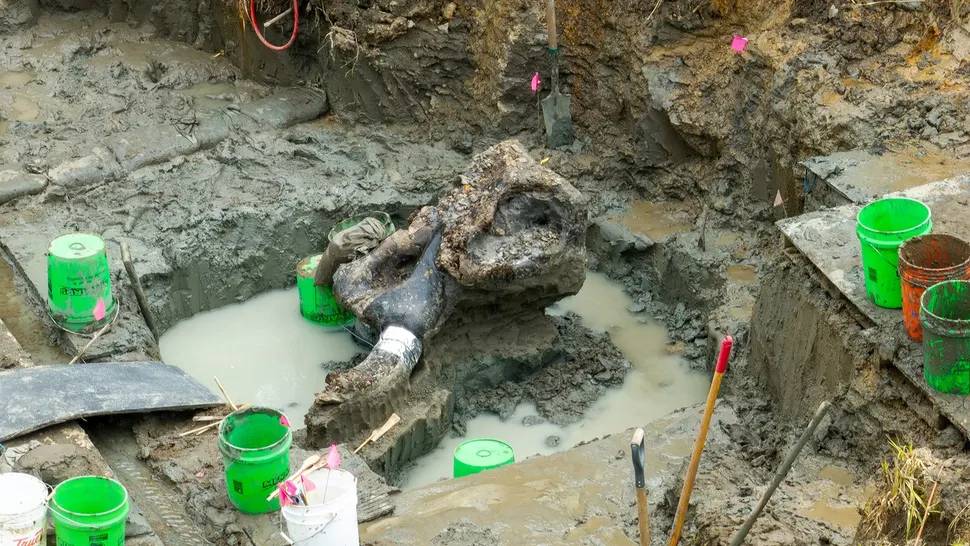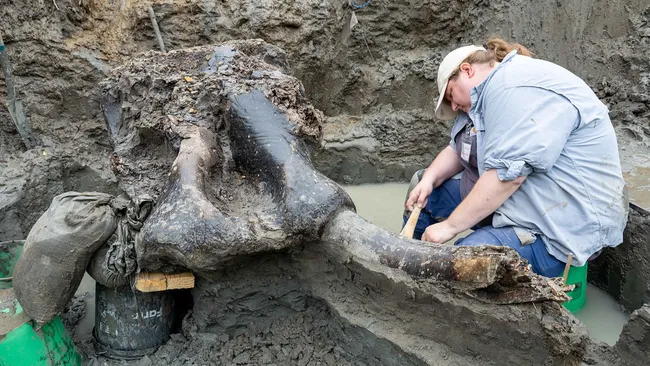A groundbreaking discovery in Iowa: a team of archaeologists has unearthed the most complete mastodon skeleton ever found in the state, featuring the ancient creature’s intact skull.
“Researchers have uncovered a remarkably well-preserved mastodon skull, estimated to be around 13,600 years old, from a creek in Iowa—marking the first such discovery in the state.
This significant find follows a 2022 report from Wayne County residents who discovered a large bone protruding from the creek. Initial examination by archaeologists identified the bone as a mastodon femur, sparking a more extensive excavation of the site.
The ongoing investigation has now revealed a massive skull with an intact tusk and additional bones likely from the same prehistoric creature. Researchers are examining whether this mastodon met its end due to human intervention or if there was any interaction with humans post-mortem.
John Doershuk, director and state archaeologist at the University of Iowa Office of the State Archaeologist, expressed anticipation about finding clues of human involvement. ‘We are hopeful to uncover evidence of human interaction, such as projectile points or tools used in hunting and butchering this magnificent animal,’ he noted.

Radiocarbon dating has confirmed the skull’s age, suggesting it dates back to the same period as the first human settlers in the region. This raises intriguing questions about potential interactions between early humans and mastodons.
American mastodons (Mammut americanum), relatives of modern elephants and mammoths, roamed North America from Alaska to central Mexico between 3.5 million and 13,000 years ago. They went extinct just before the end of the last ice age, around 11,700 years ago, likely due to climate change and human predation. Smaller than woolly mammoths, mastodons weighed approximately 6 tons (5.5 metric tons), according to the San Diego Natural History Museum.”
